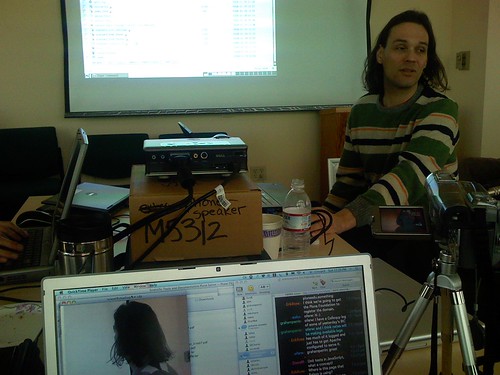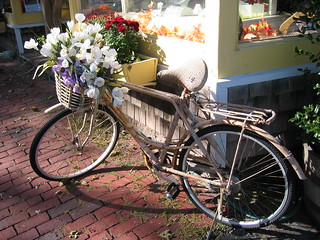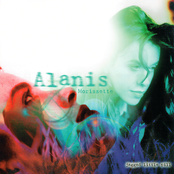I’m at the PIKtipi sprint right now and thoroughly enjoying the sprinting, camping and socializing among friends old and new. I got a chance to chat with Xavier Heymans (CEO of ZEA Partners), and he was telling me about the new PloneGov initiative. It’s really interesting to see how governments from around the world are coming together under a common purpose to create open source software to serve the public.
This lead to a discussion about the importance of organizing the Plone users within various vertical markets and that collecting case studies about how these sectors are using Plone might be a good place to start. There is already an initiative on Plone.org for this, but it appears to be inactive. What are the policies for posting to this area of plone.org? How does one contribute case studies, news, links, events, etc.?
I’ve also been thinking about how the Plone community needs to do a better job of evangelizing its successes, and helping to facilitate like-minded groups to form sub-communities. Plone is being used in a wide variety of sectors and there are so many interesting use cases: libraries, eLearning, governments, artists, newspapers, mapping and even managing vineyards!
But these case studies are few and far between. As of today, there are only 6 case studies on plone.net. I should not be the one to cast the first stone, because my company, Jazkarta, has not published any case studies yet, even though we have several projects that would be very interesting to document.
I’ve started collecting various “Plone for…” initiatives and sites, and would like to post these somewhere permanent where they can grow into a comprehensive resource for decision makers who are evaluating Plone to see if it will fit their needs. Perhaps this information would be better suited for a home on plone.net? Here is the first shot…
Plone for Libraries
• Plinkit provides Plone-based, pre-built websites for public libraries. See Darci Hanning’s presentation about Plinkit at the Plone Conference 2006.
Plone for Education and eLearning
• eduCommons is an OpenCourseWare management system designed specifically to support OpenCourseWare projects. eduCommons will help you develop and manage an open access collection of course materials. eduCommons is used by Utah State University, Novell’s OpenCourseWare, Rice University’s Connexions, etc. Read more about the history of EduCommons.
Plone for Governments
• The goal of PloneGov is to develop in a cooperative manner, applications and websites suited for public organization for their own use as well as for their citizens’.
• CommunePlone, the predecessor to PloneGov, is a fast growing open source software mutualization project led by local governments. Open to international collaboration, the project outlines the benefits of open source and mutualization for the Public Sector. Read more about CommunesPlone.
Plone for Artists
• Plone4Artists is an initiative to assemble a Plone products bundle with features commonly required for artist community websites. The target audience is artists and musicians who want to build a community portal site where they can showcase their work and network with like-minded artists.
• BI.LIVE is an example of a site that is using the 1st generation Plone4Artists products for multimedia: ATAudio/ATVideo.
Plone for eCommerce
• PloneGetPaid is a lightweight framework for payment processing and commerce in Plone. There have already been two sprints to accelerate the development of the product. The upcoming doc-comm sprint at the Googleplex in Mountain View (June 25-29) will have a team of developers working on improving this product and getting it ready for prime-time.
Plone for Multimedia
• The MediaDB project was developed as a central repository for media files and documents, that were to be used in multiple web sites (referred to as ‘media sites’ here) run by the same company. That means the project not so much implements a media server handling the media content itself (e.g. video streaming), but focuses on storing files in a central place and making them available from (remote) plone sites. Demo of MediaDB
• The Plone4ArtistsSite suite of products includes several components for making it easier to manage multimedia content in your Plone site: Plone4ArtistsAudio, Plone4ArtistsVideo, and PloneFlashUpload.
• Plumi is a GPL licensed video sharing Content Management System based on Plone and produced by the EngageMedia collective. Plumi enables you to create your own sophisticated video sharing site; by adding it to an existing Plone instance you can quickly have a wide array of functionality to facilitate video distribution and community creation. EngageMedia is a website for video about social justice and environmental issues in Australia, Southeast Asia and the Pacific.
Plone for Community Planning
• OpenPlans aims to transform social activism by providing tools that connect people and enable them to share ideas, stay organized, and act collectively to effect change. OpenCore is the Plone-based software which powers the site, and is freely available under a GPL license. Read the getting started guide which explains how they use buildit to deploy the software.
Plone for GIS & Mapping
• PrimaGIS is a collaborative web mapping application for Plone. PrimaGIS is using buildit to easily deploy a PrimaGIS site.
• Pleiades is an international research community, devoted to the study of ancient geography
• GeoServer was started to help build a more open, interoperable infrastructure of Geographic Information.
• GISPython is a resource for all things about Python and GIS.
Plone for Newspapers
• Julius is a project that came out efforts to build a website dedicated to the national elections for the Mexican newspaper La Jornada. Julius has modules to convert HTML exported from QuarkXpress into NITF files, and code to import those files and create an “edition”, which is made of articles and photos. Read Carlo’s blog post on the Plone for Newspapers initiative.
Plone for Public Radio
• While there isn’t a formal project around using Plone for public radio, there have been some discussions about Plone on the Public Broadcasting Open Source Best Practices list which was started after the Beyond Broadcast 2006 conference in Cambridge, MA, and more discussion took place at the Beyond Broadcast 2007 and the IMA 2007 Conference. There are two public radio stations known to be using Plone: KCRW and KJZZ.
Plone for Multilingual Websites
• While the Plone interface has support for 50+ languages out of the box, the LinguaPlone add-on makes it possible to manage the actual content in more than one language. Plone Solutions (the maintainers of LinguaPlone) and Russ Ferriday from Topia are considered to be some of the experts in deploying multilingual Plone-based websites. Perhaps they could provide some case studies to show how Plone is a viable solution for implementing a multilingual CMS.
• ecoagents is an EU funded gaming website whose purpose is to teach kids about environmental issues. ecoagents is using LinguaPlone and XLIFF Marshaller to provide support and translation for 26 languages.
Plone for Laboratories
• Upfront Systems and BIKA Labs in S. Africa have developed LIMS, a web-based laboratory information management system (LIMS), a Plone-based tool for managing. Read the press release.
At the sprint I’ve been working together with some other folks on creating a Plone4Artists distribution using buildout. We are preparing a tutorial that will hopefully pave the way for other groups to create their own distributions of Plone. Right now, PrimaGIS and OpenPlans’ opencore projects are the only ones that I know of that are using any kind of automated buildout software to distribute their software. It might be a good idea to formalize this process, so that if you want your distribution of Plone to be listed in the directory (wherever that may be hosted), it should include a buildout to make it easy for people to download and evaluate.
The goal is to lower the barrier to entry for a would-be Plone user/integrator. If the software is hard to install and configure, people will turn to other CMSes such as Drupal or Joomla which often have one-click installations at a hosting provider. For the first time, we have tools that provide a way to easily set up and configure a Plone site just by typing a couple of commands (1. bootstrap 2. buildout).
Tools like buildout are empowering because it means we can distribute pre-configured Plone bundles that are specifically targeting a particular audience. These specialized Plone distributions demonstrate the real value of Plone – it’s ability to be easily customized and it’s rich library of 3rd party add-on products.
Technorati Tags: plone, plone4artists




 RSS - Posts
RSS - Posts
























Recent Comments